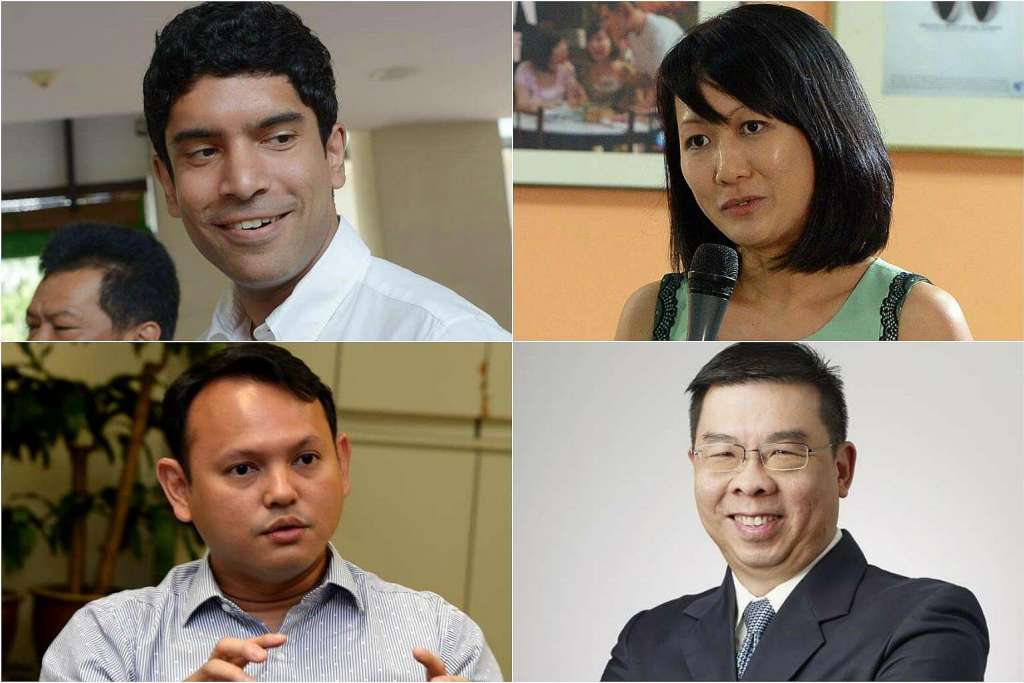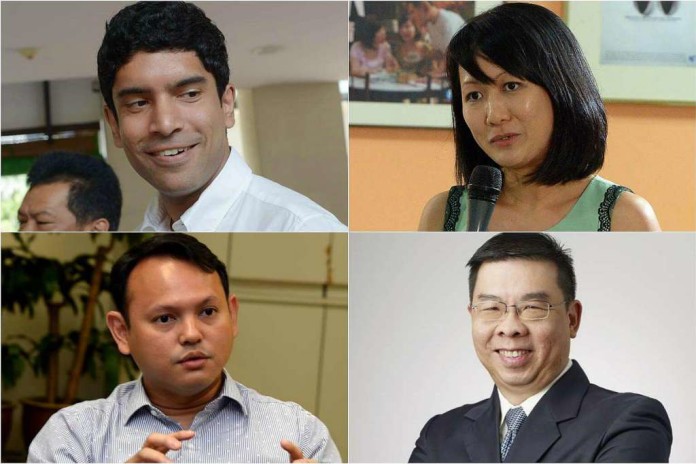It could be a social media story that spreads falsehoods about an individual. Or it could be an amateur’s prank that causes national consternation, as with a teenager’s made- up story in March last year prematurely reporting that former prime minister Lee Kuan Yew had died.
Whether you are an outraged individual or the Government, you will want to halt the spread of that fake news.
While it is not a direct offence to write or distribute fake news, there is legislation one can tap to hold someone accountable.
Take the Telecommunications Act. Under it, people who transmit a message known to be false or fabricated can be fined up to $10,000, jailed for three years, or given both punishments.
The penalties are higher if it is a bomb hoax.
In 2007, a polytechnic student was sentenced to three months’ jail and a $4,000 fine after he posted a bogus article on a forum saying that bombs had been found at the Toa Payoh bus interchange. It was put up a day after the July 7, 2005, London bombings.
However, there are practical difficulties to enforcing this, says RHTLaw Taylor Wessing partner Eugene Quah. These include finding out the identities of people who post news anonymously, and establishing that they actually had knowledge that the news posted was false or fabricated.
In the case of the polytechnic student, the police took almost a year to find him, partly because he had tapped his neighbour’s Internet connection to make the posting, masking his true identity.
As for those who threaten to disrupt social harmony, there are several statutory options.
For example, under the Penal Code and Sedition Act, it is an offence to promote feelings of ill will between different races or classes.
At least eight people have been charged with sedition since 2005, but only in the most recent case – involving the founders of sociopolitical website The Real Singapore – were made-up articles involved.
The Maintenance of Religious Harmony Act also allows the Home Affairs Minister to issue a restraining order against any religious leader inciting enmity between different religious groups, or a person who encourages a religious leader or group to do so. So far, no such restraining order has been issued.
Individuals or organisations believing their reputation has been damaged by fake news can turn to defamation laws.
There can be damage without there being a clear victim of defamation – a false rumour about an impending outbreak of war causing investors to panic and sell investments, for example.
“In such situations, it is arguable whether the victims can rely on the tort (a civil wrong) of negligent misstatement causing economic loss to claim damages, as the test may not be easy to satisfy,” says Mr Quah.
Read also: All lies: Why we should be worried about the scourge of fake news
Victims can also seek legal recourse via the Protection from Harassment Act. “The bar for this is lower, as it doesn’t have to be defamatory, just false,” says lawyer Vikram Nair, an MP for Sembawang GRC.
All Internet content providers are automatically licensed under the Class Licensing Scheme by the Infocomm Media Development Authority (IMDA), which subjects the providers to a code of practice.
While the code does not directly address fake news as a category, if a content provider breaches the code by, say, sowing racial discord or threatening national security in an article, the IMDA can cancel the class licence. It can also block overseas sites that are not class-licensed.
But other agencies with more teeth might have already stepped in. The police, for example, can arrest someone who posts a bomb hoax.
The mainstream media is also regulated, with most Acts coming under the purview of the Ministry of Communications and Information.
But, Mr Nair says, the biggest check on traditional media is its professional integrity.
“I’m less concerned about the established papers, because in this age, just about anyone can spread news and they are much harder to track down.”
PROBLEMS WITH MAKING IT ILLEGAL
There are good reasons not to put in place laws to criminalise fake news, Mr Quah says.
First, this could inadvertently clamp down on journalists, who might “second-guess themselves”, especially while reporting preliminary information on rapidly developing situations.
Second, it is difficult in some cases to distinguish between facts and opinions, he adds.
A third reason is that it is human nature to tell stories, which may get embellished in the retelling. “Enacting laws to criminalise fake news would then expose a wide class of persons to potential prosecution.”
Fourth, criminalising fake news means we would lose satire, humour and artistic expression, too. It could also appear to be censorship, “which always leaves a bad taste”, says PRecious Communications managing director Lars Voedisch.
PUSHING BACK
But other ways to address the issue of fake news are emerging.
Already, four undergraduates from three American colleges have created a false news detector in the form of a Chrome browser extension during a college hackathon. It is available for the public to download to try.
In Singapore, new local start-up JobTech posted an open letter directed at Facebook, offering to “jointly counteract misinformation”. Its technology has already successfully helped to filter out duplicate and bogus job applications.
And Facebook and fellow social media giant Google have promised to cut fake news sites from their advertisement programmes – a move that will most likely stifle those who churn out phony stories for the lucrative revenue.
Facebook chief executive Mark Zuckerberg has said he is working to improve the technological ability to classify misinformation, put out labels on stories that have been flagged as false, and make it easier for people to report fake news, among other things.
Indeed, just last Friday, stories began to appear on Facebook feeds with a survey attached, asking: “To what extent do you think this link’s title uses misleading language?”
Readers were given five options to tick – “not at all”, “slightly”, “somewhat”, “very much” and “completely”.
But some are calling for Google and Facebook to be held to the same standards as an established traditional media company. German Justice Minister Heiko Maas has suggested that Facebook ought to be held criminally liable for failing to remove hate speech.
In Singapore, in 2012, the Government took the step of setting up a website called Factually to clarify misperceptions about its policies or incorrect public assertions on government matters potentially harmful to Singapore’s social fabric.
It has tackled rumours and clarified policies related to the haze and the economy and, most recently, to address a sociopolitical website’s article that had fabricated and attributed racially charged statements to Home Affairs and Law Minister K. Shanmugam.
The Government also set up the Media Literacy Council in 2012 to help citizens navigate digital information. The council has been running an annual campaign to encourage citizens to be discerning about what they encounter online, and it works with partners such as Facebook, Google and the National Library Board to help people distinguish fake items from real information.
Individuals can also do their bit. “Communities should step up and correct falsehoods about the community,” says Institute of Policy Studies senior research fellow Carol Soon.
Mr Zaqy Mohamad, an MP for Chua Chu Kang GRC and who chairs the Government Parliamentary Committee for Communications and Information, believes that grassroots groups still play an important role in addressing untruths, many of which are still spread by word of mouth or via text messages.
These are harder to address than on a public platform such as a blog or on Facebook.
Mr Zaqy says he has come across several taxi drivers who complain that they have heard that Uber or Grab drivers are mostly foreigners who are stealing their jobs.
“But this is obviously untrue – you have to be Singaporean or a permanent resident to be such a driver,” he says, emphasising the need for community leaders to keep an ear out for such rumours and familiarise themselves with the facts.
But it is individuals who have a key role to play too, observers say.
“If you think something is wrong, just Google it (to check it) – it works most of the time,” says PRecious Communications’ Mr Voedisch.
Dr Soon says users can play an active role by calling out dubious sites. “Automated searches for fake news require machine learning, which in turn depends on human input,” she says.
Nanyang Technological University communications professor Ang Peng Hwa advises people to balance their online newsfeed with a diversity of viewpoints.
The last word goes to Media Literacy Council chairman Lock Wai Han, who declares: “To stem fake news or misinformation, a combination of public education and corporate responsibility is necessary.”
“However, the responsibility for distinguishing fact from fiction ultimately rests with the individual.”

This article was first published on Dec 04, 2016.
Get a copy of The Straits Times or go to straitstimes.com for more stories.







